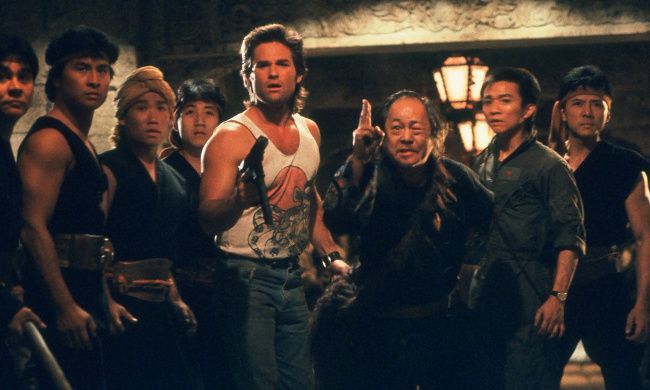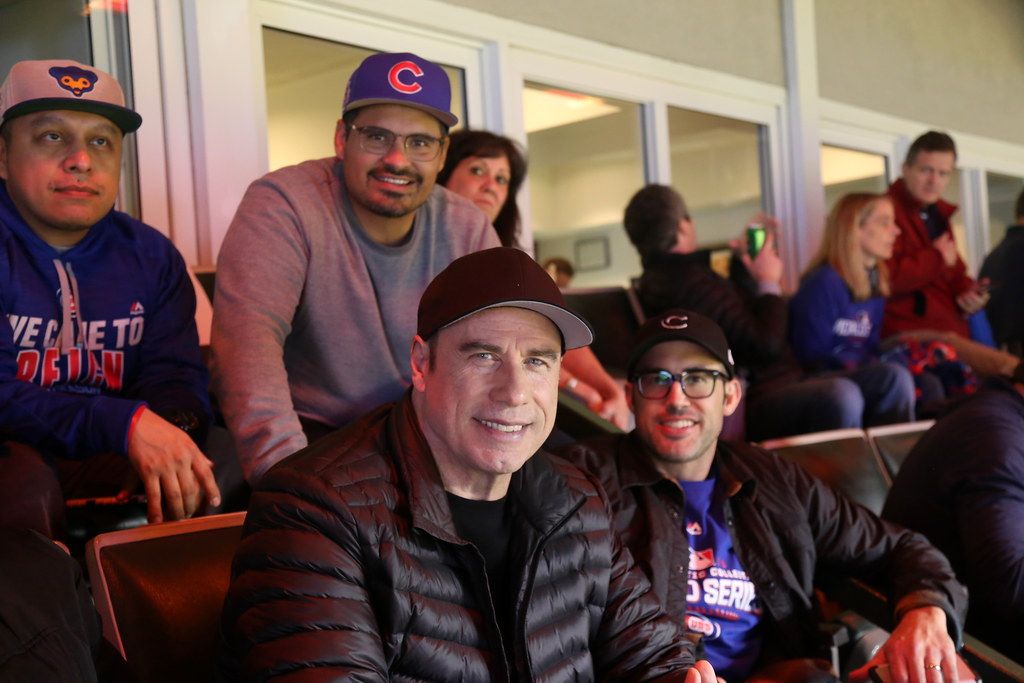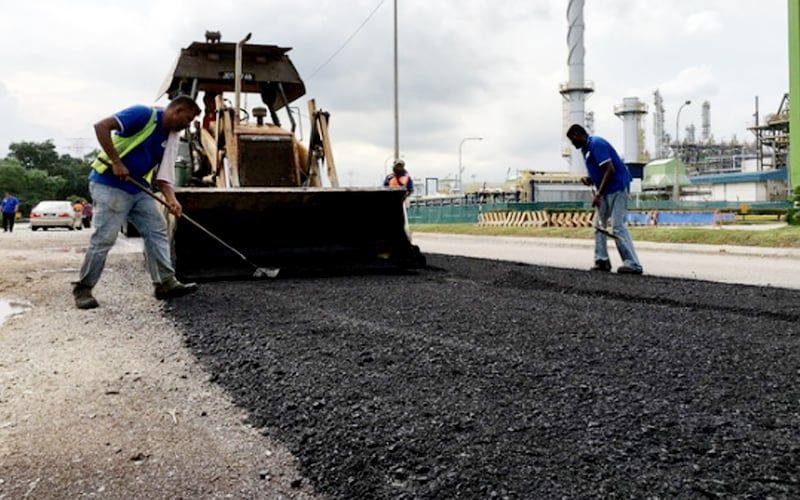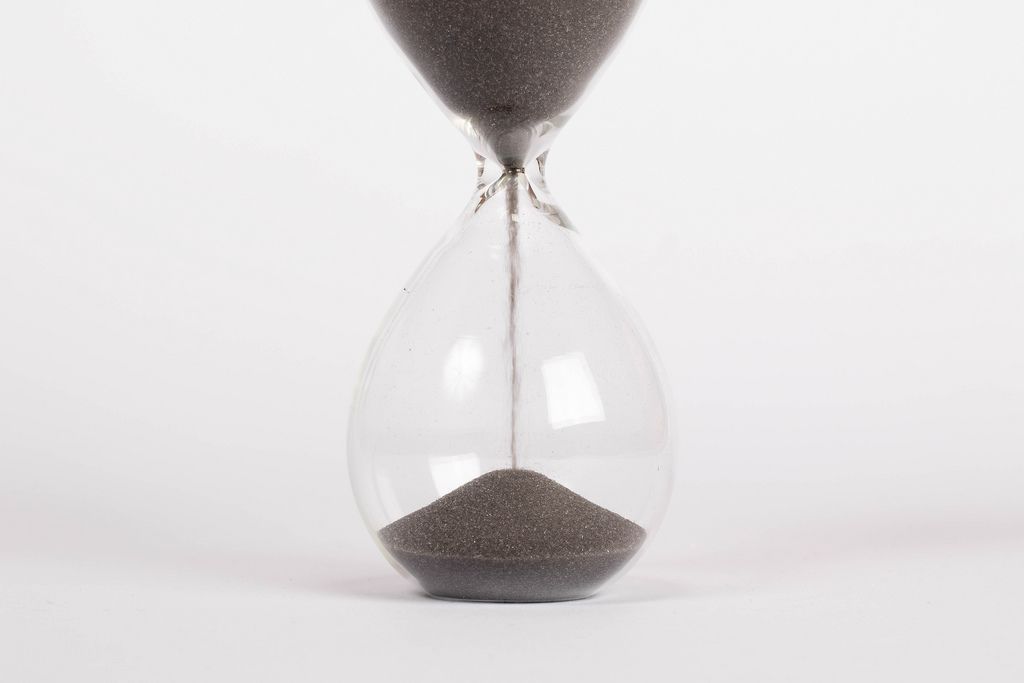
How long do actors spend on set? This seemingly straightforward question often elicits answers that defy common perception, unveiling a demanding reality far removed from the glamorous façade of Hollywood. While specifics vary based on production type, role, and scene complexity, one truth remains consistently clear: actors, alongside their dedicated crews, routinely contend with exceptionally long hours, especially during intense shooting schedules.
This conversation has moved beyond anecdotal whispers to become a critical industry dialogue, driven by increasing awareness of the profound physical and mental toll. From demanding feature films to relentless episodic television, the expectation to push boundaries often comes at a steep price. This in-depth exploration will unpack the multifaceted reasons behind these protracted hours, the immediate challenges they present, and the very real dangers that emerge when artistic pursuit overrides fundamental human needs.

1. **The Reality of a Typical Actor’s Day on Set**For many outside the industry, an actor’s workday might appear to involve brief on-camera stints, followed by ample leisure. However, the lived experience paints a starkly different picture. Actors, much like the broader production crew, are routinely confronted with workdays that are not only extensive but also highly unpredictable, stretching endurance for all involved.
A typical workday for an actor can routinely span anywhere from 8 to 14 hours. This duration is heavily influenced by immediate production needs, shooting schedule intricacies, and project demands. In fast-paced television and film, a “standard workday” often commences remarkably early, frequently around 6 or 7 a.m., and then extends considerably into the evening, sometimes well past 10 p.m.
The nature of this work means that while cameras might not be continuously rolling, an actor’s presence and readiness are consistently required. Call times shift, scenes reorder, and delays are constant factors. This necessitates a state of perpetual readiness, making “breaks” often more about waiting and staying focused than true respite.
Read more about: From Pennies to Millions: Which Classic TV Stars Are Still Cashing in on Reruns Today?

2. **Rehearsals, Takes, and End-of-Day Commitments**An actor’s demands extend far beyond delivering lines on camera. A significant portion of their workday is dedicated to meticulous preparation and enduring the iterative process of filmmaking, followed by commitments stretching past the final take. This comprehensive engagement contributes substantially to their overall time on set.
Before cameras even roll, actors are typically immersed in rigorous rehearsals, methodically reviewing dialogue and tuning performances. This crucial preparatory phase might occur first thing in the morning or be strategically woven into breaks. Rehearsal duration varies, depending on scene complexity, special effects, intricate choreography, or if the actor needs extra time to embody their character.
Once filming commences, actors are fully entrenched, often performing the same actions or dialogue repeatedly. A single scene frequently necessitates multiple takes to achieve the director’s desired vision, sometimes captured from various camera angles. This means actors are expected to replicate performances numerous times, maintaining consistency and intensity throughout the day.
Even after “wrap,” an actor’s obligations are rarely concluded. They often spend additional time debriefing with the director or producers, reviewing footage, and planning for the next day. Depending on project complexity, actors may also have post-shoot responsibilities like costume fittings, makeup trials, or promotional events, blurring lines between “work” and “personal” time.

3. **The Varied Demands of Different Production Types**The length of an actor’s time on set is profoundly shaped by the specific production type. The scale, budget, and distribution model—be it feature film, television series, or commercial—all impose distinct, intense scheduling pressures impacting daily hours.
In feature films, particularly large-budget productions, actors commonly face exceptionally long days, often 12-14 hours daily, for weeks or even months. A complex feature film shoot across multiple locations can easily extend over several months. This marathon-like commitment demands immense physical and mental stamina, immersing actors in their roles for prolonged periods.
Television shows, while sometimes offering a more predictable rhythm, nonetheless impose rigorous demands. Actors on a typical drama series can expect filming days from 8 to 12 hours. This schedule frequently persists for weeks or months, contingent on season length. Sitcoms or multi-episode series might require actors on set for extended, condensed timeframes, demanding sustained output.
In contrast, commercials and shorter independent productions typically involve significantly abbreviated shooting schedules. For a commercial, an actor might only be required on set for a few hours or a single day, reflecting faster turnarounds and reduced rehearsal needs. While offering a momentary break, these shorter formats are an exception for many working actors.
Read more about: Navigating the Automotive Minefield: A Consumer Reports Guide to 10 Vehicles with Notoriously High Repair Costs

4. **The Influence of Role Complexity and Importance**An actor’s specific role within a production is arguably one of the most potent determinants of their time on set. A character’s gravitas and visibility directly correlate with extensive demands on an actor’s schedule, creating a hierarchical impact on daily commitments and overall presence.
Lead actors, by definition, bear the heaviest burden of screen time and narrative responsibility. Consequently, they are typically present for the vast majority of the filming schedule. This is especially true for complex productions with intricate plots or lengthy, interconnected scenes where their character is central. Their continuous presence is crucial, not just for their performance but to support other actors’ cues and reactions, making their days exceptionally long.
Supporting actors, while integral, generally experience less continuous time on set. They are typically called in only when their character is explicitly required for a specific scene or sequence, potentially allowing for more downtime. However, even for those in supporting roles, production schedules can still lead to unexpectedly long days, particularly if shooting plans consolidate their scenes into fewer, longer blocks.
For ensemble casts, where narrative responsibility is distributed among several key players, dynamics shift. While they might still experience significant downtime between their scenes, the collective nature of the work often means being present and ready for group scenes or unexpected changes. Even when not actively performing, the requirement to be available, focused, and ready to contribute at a moment’s notice remains constant.
Read more about: Navigating the Depreciation Minefield: The Fastest Depreciating Cars of 2025 and What It Means for Your Wallet

5. **Scene Complexity and Its Impact on Shooting Duration**Beyond the role, the inherent complexity of filmed scenes profoundly dictates an actor’s time on set. Certain sequences are inherently more time-consuming due to multifaceted requirements, extending workdays for all involved in their execution. This transforms a standard scene into a meticulous, drawn-out process.
Action sequences, elaborate stunts, or scenes heavily reliant on special effects are notorious for demanding extensive shooting time. The primary reason is the absolute necessity of stringent safety measures, precise choreography, and intricate technical aspects in bringing such moments to life. Each element must be carefully planned, rehearsed, and executed, often with multiple takes and adjustments.
Similarly, scenes necessitating extensive makeup, elaborate hair styling, or multiple costume changes can significantly protract an actor’s time on set. These transformations are integral to character portrayal and visual continuity, often requiring hours in the chair or multiple wardrobe adjustments. The cumulative effect means an actor’s presence is required for hours before stepping in front of the camera, and their day extends through various looks.
Furthermore, dramatic and emotionally charged scenes, demanding nuanced and authentic performances, often require numerous takes for perfect emotional resonance. Directors meticulously work with actors to capture precise sentiment, subtle gestures, and powerful expressions. If an actor must perform multiple takes to convey the exact emotion, this iterative process can significantly add hours to their time on set, pushing emotional and physical endurance.

6. **Production Schedules and Location Logistics**The overarching production schedule, often driven by budgetary constraints and ambitious timelines, profoundly influences an actor’s workday, creating persistent pressure to maximize efficiency. Concurrently, logistical complexities from filming locations, especially those far afield, further compound these extended hours, adding layers of challenge to an already demanding profession.
In high-budget productions operating under tight schedules, the daily work regimen can become extraordinarily long and intense. Directors and producers are typically bound by clear, aggressive timelines for scene completion, necessitating rapid turnaround to meet crucial deadlines. This commercial imperative often translates into longer workdays, as production pushes to achieve targets within allocated resources. The pressure to “make the day” can override staff fatigue concerns.
Conversely, independent films or smaller-budget productions might, at times, possess more flexible schedules. This increased latitude can potentially allow for more extensive rehearsals and, occasionally, shorter shooting days, prioritizing artistic development. However, smaller budgets can also mean fewer resources, leading to the inverse: trying to achieve ambitious results with limited time and crew, which can result in equally, if not more, intense work periods.
The choice of filming location also plays a critical role. Productions requiring actors to shoot on remote, international, or geographically challenging locations frequently involve extended shooting days to maximize finite time on-site. Additionally, hurdles like traveling between distant locations, adjusting to new time zones, or contending with unpredictable outdoor conditions can further inflate the total time an actor is expected to be present and engaged.
Read more about: The Gritty Truth: 14 ‘Dirty’ Jobs That Pay Six Figures and Might Just Change Your Life!

7. **The Alarming Dangers of Drowsy Driving and Sleep Deprivation**Beyond immediate fatigue and professional strain, the pervasive culture of long shooting hours has a far more sinister consequence: the alarming dangers of drowsy driving and severe sleep deprivation. This issue has tragically come to the forefront of industry discussions following a series of high-profile incidents and a growing body of scientific evidence.
One such incident involved “Riverdale” actor KJ Apa, who reportedly crashed into a lamp post after an exceptionally long day of shooting. This event immediately amplified questions surrounding excessive hours demanded on movie and TV sets and the inherent risks of “drowsy driving.” It underscored that the perils of fatigue extend far beyond the set, impacting individual safety once they leave the production environment.
The conversation has gained momentum since the tragic death of camera assistant Sarah Jones in 2014, killed on a live train track “set” during “Midnight Rider” filming. Further reinforcing the gravity was the death of 48-year-old “Longmire” crew member Gary Joe Tuck in 2014, who fell asleep at the wheel and rolled his car on a New Mexico highway after an 18-hour shift. These devastating incidents serve as stark reminders of the ultimate price paid for pushing human limits.
Compelling studies from authoritative bodies, including the Centers for Disease Control and the National Highway Traffic and Safety Administration (NHTSA), unequivocally demonstrate profound cognitive impairment from lack of sleep. As Stephen Higgins, for the NHTSA, stated: “Drowsy driving is not just falling asleep at the wheel; it mimics alcohol-impaired driving.” The report details that “Drowsiness leads to slower reaction times, and impaired attention, mental processing, judgment, and decision making,” with over 72,000 police-reported crashes annually involving drowsy drivers between 2009-2013, resulting in over 41,000 injuries and 800 fatalities. These figures paint a grim picture of an industry practice that, for too long, has inadvertently put lives at risk.
The intense spotlight on grueling schedules in Hollywood doesn’t merely expose the physical and mental strains; it illuminates a far broader landscape of systemic issues, cultural silences, and the profound, often hidden, costs to personal lives. As the industry grapples with the fallout from tragic incidents and mounting calls for reform, a deeper look reveals not just the problems, but also the courageous voices advocating for change and the tangible solutions that could pave the way for a more humane and sustainable working environment.
Read more about: Mastering the Dark: Driving Pro’s Essential Guide to Enhancing Night Driving Visibility with Easy, Actionable Adjustments for Every Driver

8. **Legal Labyrinth: Liability and Workers’ Compensation Gaps**The alarming statistics on drowsy driving and occupational hazards raise critical questions about employer accountability. With studies from the Centers for Disease Control and the National Highway Traffic and Safety Administration unequivocally demonstrating the severe cognitive impairment caused by sleep deprivation, it would appear that entertainment employers could face significant liability for pushing their workforce to the brink. However, the legal landscape is far more complex than it might seem.
Personal injury lawyer Gary Dordick highlighted a crucial distinction: most crew members are often classified as independent contractors. This designation complicates attempts to extend liability to a “third party”—the production company—for accidents occurring outside the immediate worksite, even if directly attributable to fatigue from long hours. Dordick referenced the 1998 appellate court case *Depew v. Crocodile Enterprises, Inc.*, which, to his understanding, ruled that an employer might not be held liable for such off-site incidents. This legal gray area potentially insulates studios and networks from the direct consequences of their demanding schedules.
Compounding this issue, accidents that occur while driving to or from a set are often not covered by workers’ compensation. This gap in coverage means that even if long production hours are the direct cause of an accident, an injured worker may find themselves without the essential support typically provided for “on-set” injuries. The tragic death of 48-year-old “Longmire” crew member Gary Joe Tuck in 2014, who fell asleep at the wheel after an 18-hour shift and rolled his car, starkly illustrates this brutal reality. His family was left to contend with the profound loss, further highlighting the need for systemic changes that extend safety considerations beyond the physical boundaries of the set.

9. **The Invisible Toll: Erosion of Personal Lives and Relationships**Beyond the immediate physical dangers, the relentless grind of extended workdays inflicts a profound, often unseen, toll on the personal lives and relationships of those in the industry. Torstein Coyler, a veteran crew member, underscored the severe imbalance, observing, “There is no balance. Within the film industry, there is a very large culture of relationships ending, substance abuse to keep awake or fall asleep or to even cope with everyday life of not having a social life, not having friends or feeling connected to other people because all you are doing is working these incredibly long hours.” The camaraderie found on sets, he noted, often stems from “necessity” rather than genuine social connection, as professional demands consume nearly all available time.
This constant immersion in work, coupled with profound fatigue, creates a fertile ground for substance abuse. Individuals turn to various substances not just to stay awake during punishing shifts or to fall asleep after adrenaline-fueled days, but also as a coping mechanism for the deep isolation and lack of personal fulfillment that can arise from a life dominated by work. The absence of a robust social life and meaningful connections outside the industry bubble exacerbates feelings of disconnect, pushing many towards unhealthy coping strategies.
Coyler’s stark conclusion resonates deeply: “For a lot of people, these 14-hour days are not just about driving, it takes a huge toll on your happiness, your ability to cope and have relationships. The film industry not only will take your time, it will also take your life.” This sentiment speaks volumes about the emotional and psychological burden borne by countless individuals striving to maintain careers in an industry that, for many, offers unparalleled creative opportunities but often at an unbearable personal cost, eroding the foundations of their well-being and happiness.

10. **Beyond Drowsy Driving: Other Perils and Health Risks**While drowsy driving has rightly received significant attention, it represents only one facet of the pervasive health risks associated with chronic sleep deprivation and excessive work hours in Hollywood. A particularly insidious danger is “microsleep,” brief, involuntary episodes of sleep lasting from a fraction of a second to up to 10 seconds, where the brain temporarily shuts down while individuals are fighting to stay awake. Adam Bocknek, who experienced a car crash last October resulting in two herniated discs, two compressed discs, and a torn rotator cuff, attributed his accident to microsleeping, candidly admitting, “It wasn’t the first time that I fell asleep at the wheel either — just the first time I almost killed people.” These terrifying moments highlight the brain’s desperate attempt to recover even minimal rest, often with perilous consequences.
The long-term health implications extend far beyond immediate accidents. Haskell Wexler, an Academy Award-winning cinematographer, dedicated much of his professional life to advocating for safer hours after camera assistant Brent Hershman was killed in 1997, having worked a 19-hour day preceded by four 15-hour days. Wexler consistently sought to shine a light on the chronic health dangers, recognizing that prolonged fatigue fundamentally compromises physical and mental well-being, contributing to accidents both on and off set.
The industry’s continued disregard for these scientifically documented dangers is, as Bocknek puts it, “unconscionable.” A special effects coordinator, who chose to remain anonymous, recounted a tragic incident where an effects guy “made a mistake that led to his ultimate death” due to exhaustion. These incidents are not isolated; they are the grim manifestations of an industry that, despite compelling studies on cognitive impairment from lack of sleep, often chooses to ignore the findings. The consequence is a workforce pushed to exhaustion, where maintaining personal safety becomes an individual burden rather than a collective responsibility.

11. **Systemic Flaws: Unrealistic Demands, Disorganization, and Budget Pressures**At the heart of the incessant complaints about long shooting hours lie deep-seated systemic flaws, often driven by a combination of diminishing budgets, unrealistic expectations, and a striking lack of organizational foresight. Crew members frequently lament that “Budgets are smaller or staying the same, however the same quality is expected. The money has to come from somewhere, so it comes from labor.” This fundamental squeeze pushes production to demand more from its human resources, leading to an erosion of reasonable work-life boundaries and increasing the daily intensity.
The problem is exacerbated by what many describe as chronic disorganization on sets. Veteran crew members told Deadline that directors sometimes waste valuable shooting time engaging in “lengthy discussions about camera angles on set that should have taken place in pre-production.” This lack of preparation before stepping on set translates directly into extended workdays for everyone. Anson Williams, a director with over 30 years of experience, emphatically stated, “Some directors take hours to figure out shots on set that could have been done in prep. That is very unfair to the cast and very unfair to the crew. It’s just laziness, and it’s not knowing your craft.” This sentiment underscores a critical need for more diligent pre-production planning and experienced leadership.
Adam Bocknek further articulated the dehumanizing aspect of this system, noting, “Writers think that a three-graph description is one scene, but it’s really like 12 scenes. We are only numbers on a spreadsheet. We are not people to them.” This perception highlights a disconnect where the human cost of ambitious creative visions or tight financial constraints is often overlooked. Unlike editors, who are “so valuable that they are in a position of power to say, ‘I’m not working those hours,’” many other crew and actors lack the leverage to resist the pressure, leaving them vulnerable to hours that Tracey Izatt, a 25-year industry veteran, concluded are “imperiling people’s lives.”

12. **Voices for Change: Advocating for “Human” Workdays and Industry Responsibility**Despite the entrenched challenges, a growing chorus of voices within the entertainment industry is actively campaigning for systemic change, pushing for more “human” workdays and a greater sense of responsibility from those in power. Richard Jones, father of the late camera assistant Sarah Jones, along with his wife Elizabeth, founded the Sarah Jones Film Foundation, becoming strong proponents of on-set safety and working with film schools to integrate safety into their curriculum. He asserted, “If you really want to change a culture of an industry, you have to start with young minds,” emphasizing the long-term vision for cultural transformation.
Not all productions operate under abusive hours, and many crew members are quick to praise leaders who prioritize their well-being. Multiple Academy Award-winner Clint Eastwood is widely recognized for routinely watching out for his crew, often adhering to shorter, eight-hour workdays while still managing to bring his movies in on time and often under budget. Similarly, director/executive producer Chris Fisher of Syfy’s *The Magicians* and film director David Cronenberg receive high marks for maintaining “human” workday hours, demonstrating that artistic excellence does not necessitate exhaustive schedules.
Even actors from classic television, like Marion Ross of *Happy Days* and Loretta Swit of *M*A*S*H*, recall periods of strict adherence to reasonable hours, particularly when children were on set. Swit also shared her personal strategies for coping with the inherent demands, such as napping during lunch, acknowledging that the work itself is “demanding on many levels, not just physically.” These examples, both historical and contemporary, serve as powerful reminders that a more respectful and sustainable approach to production is not only possible but has been successfully implemented, proving that the current routine of excessive hours is a choice, not an inevitability.
Read more about: Beyond the Pixels: An In-Depth Look at the Grueling Hours and Enduring Stress Shaping Game Development Today

13. **Forging a Path Forward: Practical Solutions and Best Practices for Safer Sets**The ongoing dialogue around long shooting hours has brought forth a range of practical solutions and best practices that, if widely adopted, could significantly improve safety and well-being on set. Producers are urged to implement basic safeguards, such as hiring a wrap crew to take over after the main team’s legitimate workday, ensuring they can leave on time. Critically, limiting shooting days to under 12 hours is highlighted as essential, given that “the law of diminishing returns states that the longer the work day, the lower the quality of work.” Establishing a mandatory 12-hour turnaround time between shifts is another vital recommendation, allowing cast and crew adequate rest and preparation.
For situations where shooting runs late or locations are remote, booking hotel rooms for the cast and crew is presented as a financially sensible alternative to risking fatigue-related accidents. Providing a second meal at the 12-hour mark follows industry standards and helps maintain energy. Showing dailies, the footage already shot, can also serve as a powerful motivator, allowing crew and cast to see the fruits of their labor, boosting morale during grueling periods. Furthermore, beyond just paying overtime, offering gestures of appreciation like coffee gift cards can significantly impact morale, especially for those working without traditional overtime compensation.
Individual actors, too, have developed strategies to navigate these demands. These include maintaining physical fitness, practicing mental focus techniques like meditation, optimizing nutrition and hydration, using breaks wisely, incorporating mindfulness, and ensuring quality sleep. Actor-director Anson Williams, after experiencing a drowsy driving incident, worked with his uncle, Dr. Henry Heimlich, to develop Alert Drops, a spray product based on the reflex-response to citric acid, to help stay awake. While such personal solutions offer relief, the ultimate goal remains systemic change: more organized sets where directors are thoroughly prepared, as advocated by Williams, Bocknek, and Coyler, and an industry-wide commitment to treating employees with the same respect for safety and well-being as the construction industry or even the military, ensuring that the relentless pursuit of cinematic magic doesn’t come at the cost of human lives and livelihoods.
The persistent complaints about long shooting hours are not simply the grumblings of a privileged few; they are a critical alarm bell signaling deeply embedded issues within the entertainment industry. From the chilling culture of silence to the devastating toll on personal lives and the very real dangers of exhaustion, the narrative is clear: systemic change is not merely desirable, it is imperative. The powerful voices of those who have suffered, the tangible solutions being proposed, and the examples of productions that prioritize human well-being offer a roadmap toward a future where Hollywood can continue to captivate audiences without compromising the safety, health, and dignity of its dedicated workforce. The time for true transformation is now, to ensure that the magic on screen does not mask a tragedy off it.



:max_bytes(150000):strip_icc()/InStyle-November-Kristen-Stewart-Lead-Social-3-2000-3df0d52122904eaca75fab6c226a38b9.jpg)